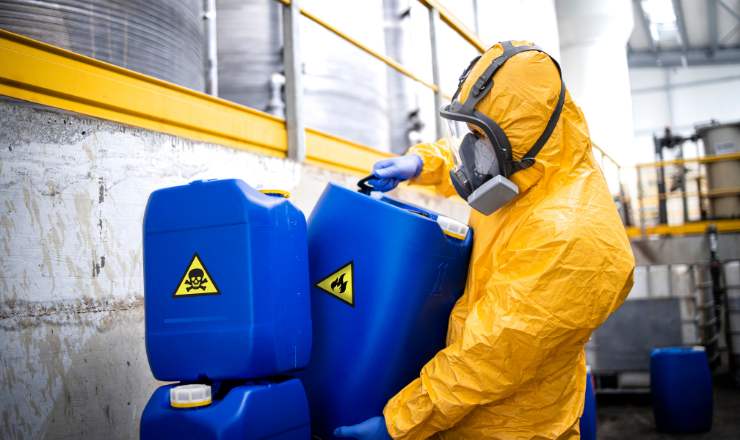In logistics and transportation, some goods are classified as hazardous due to their potential to harm human health, the environment, or property. Shipping hazardous goods requires adherence to strict regulations and safety measures to make sure the well-being of everyone involved in the transportation process. Whether you’re a business shipping hazardous materials or an individual looking to send such items, understanding the guidelines for safe transport is crucial. Let’s walk you through the key aspects of safely shipping dangerous goods.
Understanding Dangerous Goods
Dangerous goods encompass a wide range of items, including flammable liquids, corrosives, explosives, gases, toxic substances, and more. These goods can pose risks during transportation, so it’s essential to accurately identify and classify them according to international regulations, such as those provided by the International Air Transport Association (IATA) and the International Maritime Dangerous Goods (IMDG) Code.
Proper Packaging and Labeling
One of the most critical aspects of shipping hazardous goods is proper packaging and labelling. Hazardous materials must be packaged in containers designed to withstand the specific risks associated with the goods. Additionally, clear and accurate labelling is essential to communicate the nature of the contents and potential hazards to handlers and transport personnel.
Compliance with Regulations
Shipping hazardous goods requires compliance with various regulations, depending on the kind of transport (air, sea, road) and the type of goods. These regulations outline packaging requirements, labelling specifications, documentation procedures, and safety precautions. Non-compliance can result in fines, delays, and even legal consequences.
Proper Documentation
Accurate and complete Documentation is crucial when shipping hazardous goods. Shipping papers, including the dangerous goods declaration, provide essential information about the nature of the goods, their classification, packaging, and handling instructions. Wrong or incomplete Documentation can lead to delays and safety risks.
Choosing the Right Carrier
Selecting a reputable and experienced carrier is vital when shipping hazardous goods. Look for carriers specialising in transporting dangerous items and have a valid track record of compliance with regulations and safety protocols. Consider using a dangerous goods courier service like Overseas Air Freight, known for its expertise in handling hazardous materials safely and efficiently.
Employee Training
Proper training of personnel involved in the shipping process is essential for the safe transportation of hazardous goods. Employees should be taught about the risks associated with different types of dangerous goods, proper handling procedures, emergency response protocols, and the use of safety equipment.
Emergency Response Planning
Despite careful planning, accidents can happen. Having a well-defined emergency response plan in place is essential. This plan should outline steps to take in case of spills, leaks, fires, or other hazardous incidents during transportation.
Environmental Considerations and Sustainability
When shipping hazardous goods, it’s essential to prioritise safety and consider the environmental impact of transporting dangerous items. Many hazardous materials can have adverse effects on the environment if mishandled or leaked during transportation. As a responsible shipper, you should be aware of the potential environmental risks and take steps to minimise your ecological footprint.
Eco-Friendly Packaging: Opt for packaging materials that are environmentally friendly and recyclable. Whenever possible, choose packaging that can be reused or repurposed to reduce waste. Biodegradable or compostable packaging options are also worth considering to minimise the environmental impact of your shipments.
Efficient Routing and Consolidation: Efficient route planning can significantly reduce fuel consumption and carbon emissions. When shipping hazardous goods, work with your chosen carrier to optimise routes and consolidate shipments whenever feasible. This not only helps the environment but can also lead to cost savings.
Emission Reduction Strategies: Some courier services offer emission reduction strategies such as carbon offset programs. These initiatives allow you to offset the carbon emissions created by your shipments by investing in environmentally friendly projects, like reforestation or renewable energy initiatives.
Proper Disposal and Recycling: Part of the responsibility of shipping hazardous goods includes ensuring proper disposal of packaging materials and hazardous waste at the destination. Ensure the recipient is equipped to handle any waste materials resulting from the goods you’re shipping. This includes providing clear instructions on how to dispose of or recycle packaging.
Continuous Improvement: As advancements in sustainable shipping practices continue to evolve, stay informed about new technologies and methods that can further reduce the environmental impact of transporting hazardous goods. Regularly review your shipping processes and seek opportunities for improvement.
Conclusion
Shipping Hazardous Chemicals Courier Services requires a thorough understanding of regulations, proper packaging and labelling, accurate Documentation, and careful planning. Safety should be the top priority throughout the entire transportation process. By following the guidelines outlined in this guide and partnering with experienced and reliable courier services like Overseas Air Freight, you can ensure that hazardous goods are transported safely and efficiently, protecting both people and the environment.

